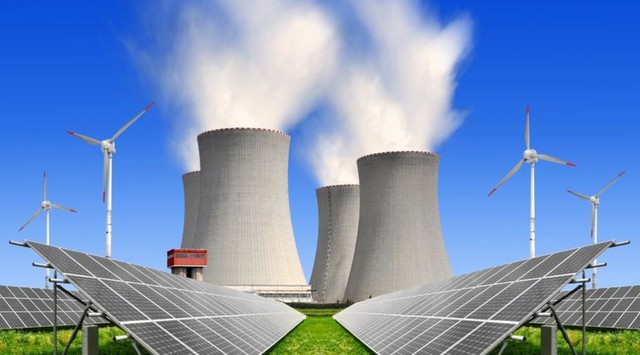Possible pathways for Viet Nam to reach net zero target
VGP - The Danish Energy Agency, the Electricity and Renewable Energy Authority under the Ministry of Industry and Trade, and the Danish Embassy jointly released the Viet Nam Energy Outlook Report 2021 (EOR21) with eight findings and recommendations for Viet Nam to reach the net zero target by 2050.

Illustration photo
Under the expected economic and population growth, the Viet Nam's future energy demand is expected to increase.
This requires a fast development of the Vietnamese energy system and causes new challenges, which are covered by the themes in EOR21 including Energy system costs/affordable energy, the need for additional transmission capacity, dependency on fuel import, and air pollution.
Reduced reliance on fuel imports and lower import costs
Firstly, it is possible to reach a net zero emissions energy system in 2050 at an extra cost of only 10% compared to the baseline scenario if done right. Early actions are required to make emissions peak no later than in 2035 to avoid paying excessive costs.
Secondly, to reach net zero emissions by 2050 at least cost, renewable electricity should be the main substitute for fossil fuels, either directly, or indirectly through production of electro-fuels. The power system is expected to satisfy 70% of the total energy demand in 2050. The primary sources of RE-based power production are solar (75%) and wind (21%).
Thirdly, the green transition of the power system will be very capital-intensive and could require annual investments of up to US$ 167 billion USD in 2050 in the NZ scenario, corresponding to around 11% of the projected national GDP in 2050.
Power system costs will shift towards less fuel costs and much more capital investment costs. Capital investment costs are around 50% of total power system costs in 2030 in all scenarios while towards net zero in 2050 it increases to 90% of the total power system costs. Therefore it is crucial to achieve access to cheap financing options.
Fourthly, Viet Nam should stop planning new coal-fired power plants and refurbish existing plants to become more flexible to better integrate renewables. Furthermore, it is recommended to limit the expansion of gas and LNG-fired power plants as the current planned 25 GW capacity is more than sufficient to reach net zero emissions in 2050.
Fifthly, to reach net zero in 2050, storage systems should play a central role, but only after 2030 is battery necessary and cost efficient.
Batteries are still expensive today and not needed in Viet Nam in the short term as balancing can be provided by existing hydro and thermal power plants.
In the coming 10 years, reinforcement of transmission capacity is urgently needed, especially to connect the best renewable resource in South with demand in the North.
Sixthly, nuclear power is only cost-efficient if the implementation of renewable energy, particularly solar energy is severely constrained.
The analysis shows that current nuclear power technologies are not cost-competitive with the combination of solar, wind, storage, and transmission. Only when these technologies are prevented from being fully utilised, for example because of constraints on access to land, nuclear power can be competitive towards net zero in 2050.
For example, if only half of the land area of 11,000 km2 solar energy potential is available in the NZ, there will be a need for 35 GW of nuclear power.
Seventhly, early action is needed to decarbonise the transport sector. Additional benefits are much less air pollution and less dependency on fuel import.
Direct electrification is key – around 80% and 50% of passenger and freight demand respectively should be electrified in 2050.
Viet Nam should start phasing out vehicles using fossil-fuels from 2025, switch to collective transport modes, and shift freight transport towards railway from 2030 and electrify all land transport.
Eighthly, reaching net zero will make Viet Nam independent of fuel import.
Viet Nam's import dependency is expected to increase significantly in the next decade and by 2050, the share of imported fuels can reach 70% in the baseline scenario with imported fuel costs corresponding to US$ 53 billion.
Lowering fuel imports will reduce risks related to fuel price variations.
The analysis shows that a price increase of 20% leads to a 50% reduction in the use of LNG in the power sector in the BSL scenario.
An even higher LNG price will lead to even lower need for LNG. By reaching net zero emissions in 2050, the long-term energy security can be substantially enhanced by greatly reduced reliance on fuel imports and lower import costs.
By reaching net zero emissions in 2050, the long-term energy security can be substantially enhanced by greatly reduced reliance on fuel imports and lower import costs. The NZ scenario reaches an almost self-sufficient energy supply in 2050./.

